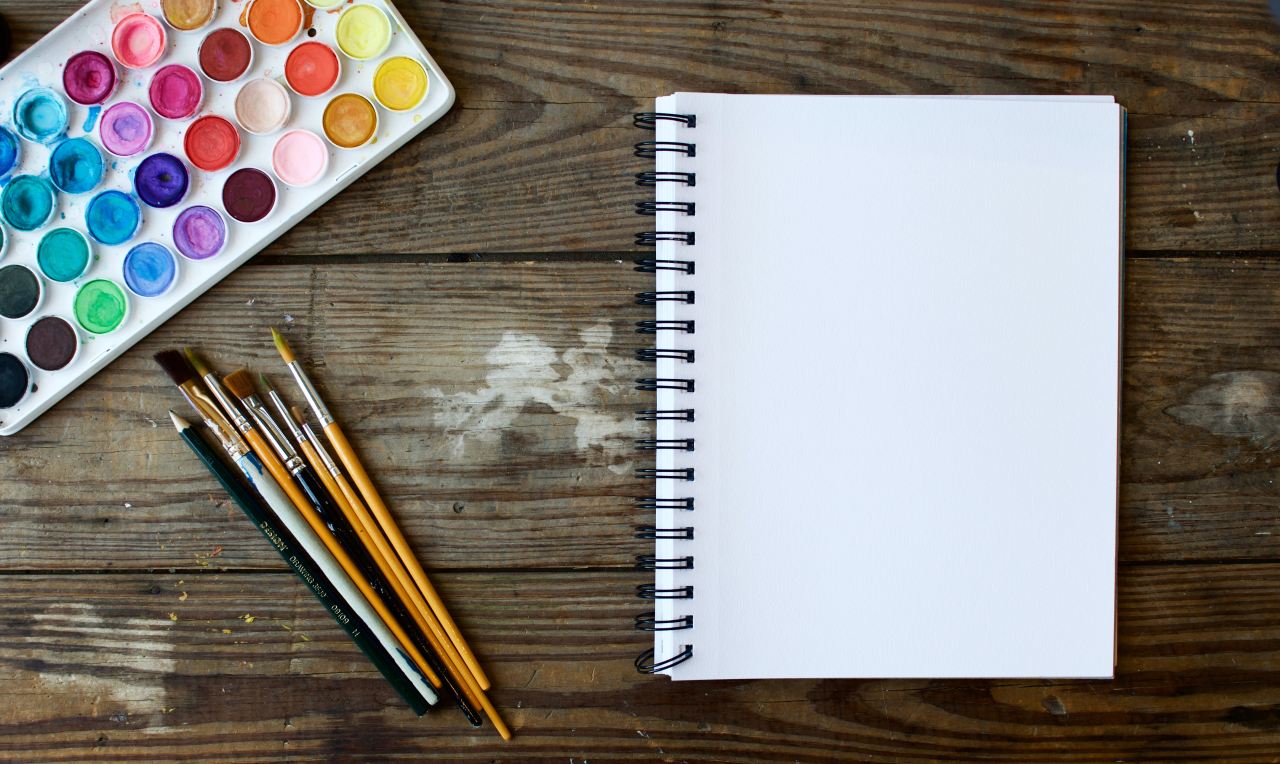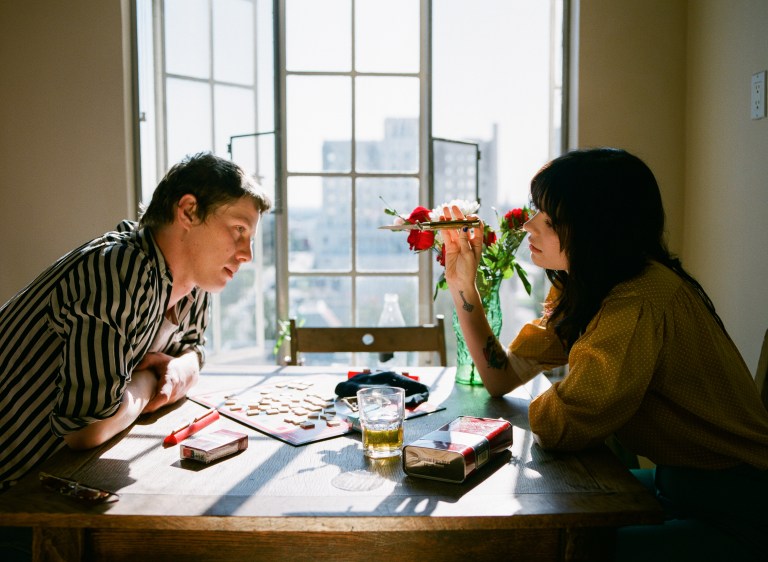10 Ways ‘The Artist’s Way’ Renewed My Creativity
“Let yourself be an artist by removing the pressure to be a great artist,” wrote Cameron. I took this to heart.

Walking through my neighborhood, I noticed an old, artsy-looking red book laying out for anyone to take. Skimming the pages, I noticed an accomplished female author had written it. I saw passages on anger, jealousy, and abundance. I took the book.
I am a determined, proactive, and goal-oriented type of person. Yet, I had been feeling anxious regularly; I was burning out at my prestigious tech job. On paper, my career plans were coming along beautifully. But I knew something was wrong. What exactly was I “winning”?
Somewhere along the way, I lost touch with my intuition. Like so many in our productivity-obsessed culture, I sometimes thought of myself as a well-oiled machine, glorifying efficiency. I recall stumbling onto the The Artist’s Way book as a synchronous moment; I had no idea how much I needed it.
Many well-known artists such as Tim Ferriss and Elizabeth Gilbert rave about The Artist’s Way. Before writing the book, Julia Cameron spent over 10 years teaching a spiritual workshop to help people free their creativity. Then she made this 12-week plan for anyone interested in the art of creative living.
Eight months later, I am rediscovering my passion for writing and sharing life-changing stories. I am making more aligned choices in work, home environment, and relationships. Most importantly, I have been showing up every day with a process I love. Here are 10 ways my creativity — and life — has been renewed through The Artist’s Way.
1. I learned to use my anger
I grew up in a traditional Christian environment where women are considered “inferior.” As a result, I grew up being “nice,” stuffing aside unpleasant feelings.
Actually, our anger provides a map, and it’s a sign of good health. “Sloth, apathy, and despair are the enemy. But anger is a very, very loyal friend. It will always tell us that it is time to act in our own best interests. Anger is action’s invitation,” wrote Cameron.
Now, I metabolize anger through writing, making music, and other creative projects. I value the gift of clarity my anger brings.
2. Similarly, I act on jealousy
Like nearly everyone alive, I experience jealousy from time to time. This complex emotion used to cause self-doubt. Why can’t I be awesome like her?
Actually, jealousy provides additional clarity. When we believe there is room for everyone’s dreams, we can be open to this unpleasant feeling. Now, I keep using this “jealousy map”:
Write the name of the person making you feel jealous
Explain why you feel jealous
Write a small way you can take action today
3. I set emotional boundaries
As a child, adults in my life didn’t teach me to set emotional boundaries. Without these boundaries, I played small to avoid more criticism. Through exercises on “Safety,” I realized how many creative criticisms I had internalized. I sincerely believed something was wrong with me.
Now when I do something vulnerable, I decide who does and doesn’t get to be in the loop. I draw a circle and put vulnerable topics into the circle. Then I proactively decide with whom I feel safe enough to share. Having these boundaries played a critical role in sharing my first vulnerable article.
4. I handle criticism well
Thoughtful criticism helps us; we experience “aha” moments. We feel empowered. Yet most criticism hurts. Here are the inherent characteristics of hurtful criticism: vague, personal, inaccurate, and shaming.
I adopted Cameron’s strategy for processing criticism: I let myself feel the pain completely. I note specific phrases that hurt or helped. I consider whether those phrases remind me of childhood shaming — this happens often. Then, I write a response — not intended to send — to the critic, sharing what was helpful, what wasn’t and defending my work.
Mostly, I lovingly nurture myself, so I can get back to creating — the best cure.
5. I feel more relaxed
“Let yourself be an artist by removing the pressure to be a great artist,” wrote Cameron. I took this to heart.
Like many, I used to be my own worst critic, striving for perfection. The Artist’s Way journey taught me to create a process I love. With redesigning my wardrobe, expanding playtime, going on “artist dates,” and finally taking that dance class, my life has become much more fun. When our life is good, our art is good.
6. I revived my spirituality
“Creativity is God’s gift to us. Using our creativity is our gift back to God,” writes Cameron. As recommended, I created an altar for daily prayer to remind myself that creativity is a spiritual journey.
My new, grounded spiritual practice has become the foundation for my creativity. It’s not about losing common sense in the name of faith. Spiritual faith looks more like praying to catch the bus, then hauling ass to catch it.
In my experience — and many others’ experience — having faith allows me to relax into the process more. I can release dependency on vices and depend on a higher power instead. In this state of openness, I more easily see unexpected opportunities.
7. I feel more aligned in my creative work
“Whatever you think or believe you can do, begin it. Action has magic, grace, and power in it,” said Johann Wolfgang von Goethe. Though I’ve created blogs in the past, I often struggled to share more vulnerable topics. Now I know my best work comes from my deepest, often unpleasant emotions.
Though I still struggle to hit “submit” or “publish,” sometimes sharing feels easier with practice.
“My creativity always leads me to truth and love,” writes Cameron. Some of my favorite articles started with strong emotion and a vague idea of my key point. I try to let the art shine through my writing as much as possible.
8. I rediscovered my identity
Throughout my life, I have been a people-pleaser. Growing up in a judgmental environment, I lost parts of myself. I shapeshifted as a coping mechanism.
Through morning pages, a required “Artist’s Way Tool” (daily stream-of-consciousness journaling), I reconnect with myself. I own all the parts of myself, more easily asserting what I like or don’t like. I handle complex situations or emotions with more ease.
I’ve recently received feedback from multiple sources that I “really know what I want” in work and relationships. I love that.
9. I treat my creativity gently
I used to push myself quite a bit with workouts or professional projects. I have spent a long time trying to prove myself—subconsciously, of course.
The Artist’s Way has helped me to reconnect with compassion. Creativity is a spiraling, spiritual process; some weeks are high energy, others are less inspiring. The ups and downs are part of the process.
I accept the “ugly ducklings” I create as a necessary part of the journey. I more easily rest when my body tells me to. Mostly, I don’t agonize over the results; I just keep showing up.
10. I keep showing up
At yoga classes, the instructor often begins with, “You already did most of the work by showing up to your mat today.” I used to roll my eyes, but now I understand this truth.
Showing up to create isn’t about strong self-discipline; it’s about making the process fun. I take breaks more often, go for walks, do yoga, light incense, and plan trips. I created a nurturing, playful workspace. Now I mostly feel excited when I sit down to write.
I celebrate more often, letting myself indulge authentically. I do the work without judging it (for the most part). With pride, I create a process I love.
Closing thoughts
“All the arts we practice are apprenticeship. The big art is our life,” said M.C. Richards.
This book has been a game-changer for me. I feel more excited and optimistic about my life. I feel more in-tune, authentic, and open to the process. I could not recommend this journey more highly.
In our capitalist world that squashes creativity early on, we need books like The Artist’s Way.
“It’s a funny thing about life; if you refuse to accept anything but the best, you very often get it,” said Somerset Maugham.




